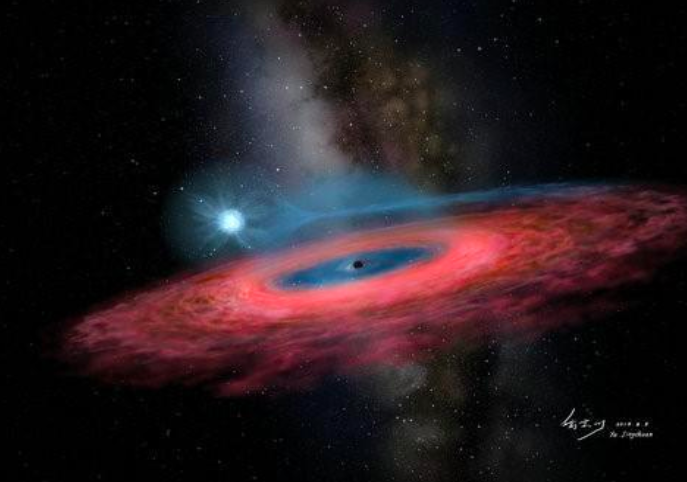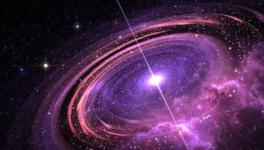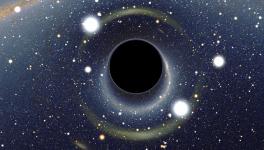Discovery of Giant Black Hole in the Milky Way Poses New Challenges

Image Courtesy: EurekAlert.
A giant black hole named LB1 was reported to have been observed recently. This black hole was found in our galaxy, the milky way. The research findings that appeared in the journal Nature recently said that the black hole sits at 13,800 light years away from the Earth, which means it is relatively close to our planet in the cosmic terms. 13,800 light years is a small fraction of the milky way’s estimated diameter of 2,00,000 light years.
The team has discovered the black hole using gravitational observations from China’s LAMOST—the large sky area multi object fiber spectroscopic telescope.
This giant has posed a new challenge for astrophysicists, because the discovery of this black hole has challenged what the previous theoretical predictions were. The LB1 black hole is estimated to have a mass 70 times that of the sun, an unimaginably huge one. The earlier theoretical predictions said that any black hole, in terms of mass, should not be more than 25 times than the sun. The new dimension that this black hole has revealed has perplexed the scientists, by proving that our universe is much larger than what our imagination can offer to us.
Also Read: NASA Releases Mesmerising View of Black Hole
“Black holes of such mass should not even exist in our galaxy, according to most of the current models of stellar evolution," lead author Jifeng Liu, deputy director-general of the National Astronomical Observatories of China at the Chinese Academy of Sciences, said in a statement.
He also said, “We thought that very massive stars with the chemical composition typical of our galaxy must shed most of their gas in powerful stellar winds, as they approach the end of their life. Therefore, they should not leave behind such a massive remnant," He added in the same statement, "Now, theorists will have to take up the challenge of explaining its formation.”
As a possible explanation of the massiveness of the black hole, another team led by professor Roberto Soria of Sydney Institute for Astronomy and School of Physics at the University of Sydney has come up with two possibilities. According to them, two smaller black holes may have formed independently from two stars and then merged to form a single gigantic black hole.
The other possibility, according to them is that the single black hole had emerged as an ordinary one and swallowed most of the host stars, for example like wasp larvae inside a caterpillar, to become a huge one.
Also Read: NASA Releases Mesmerising View of Black Hole
Black holes still remain astronomical mysteries, though the scientific community has started getting empirical evidences beyond the theoretical predictions. Black holes are formed when stars die off after their lifetime of millions of years. Black holes are so dense, and have such a strong gravitational pull that even light cannot escape through it. Since the first ever predictions by Albert Einstein back in 1916 in his one of the most celebrated theories—the general theory of relativity, and much theoretical developments made by Stephen Hawking, black holes have become astronomical objects that attract fascinating researches.
Get the latest reports & analysis with people's perspective on Protests, movements & deep analytical videos, discussions of the current affairs in your Telegram app. Subscribe to NewsClick's Telegram channel & get Real-Time updates on stories, as they get published on our website.





















